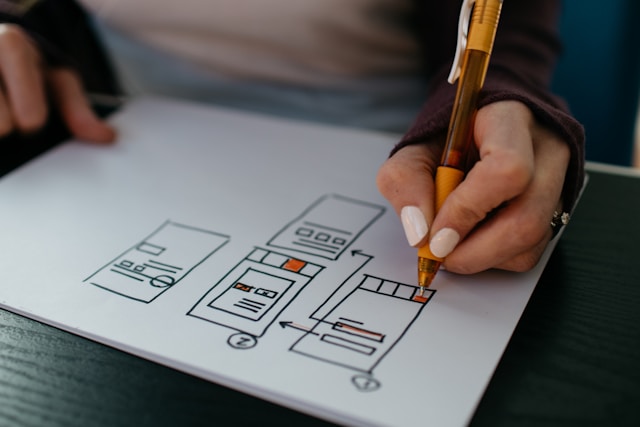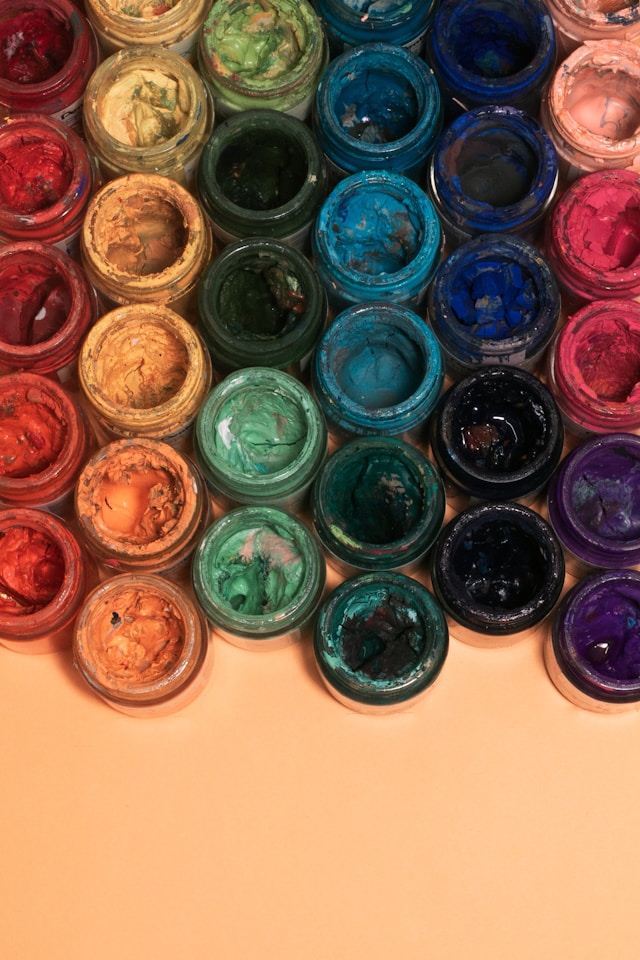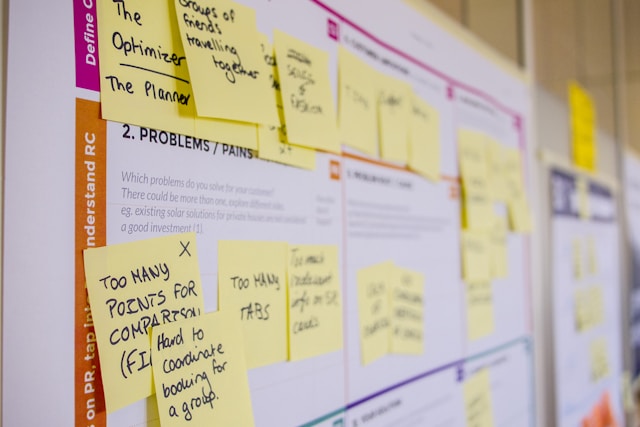If you’ve shown an interest in UX design, you’ve probably also shown an interest in becoming a UX designer.
Being a UX designer means going above and beyond to fulfill a user’s needs and desires. To solve a user’s problem or provide an entertaining user experience, you must know how to prioritize your target users. Ultimately, the quality of your product/service will reflect your dedication to understanding your target users.
We’ve discussed the design process and design principles, all of which serve as essential facets of UX designers’ knowledge bases. However, another equally important facet is a UX designer’s design skills.
That brings us to the topic of today’s guide—UX designer skills. A successful UX designer will exhibit and utilize a range of technical skills and soft skills. Today, we’ll address what those skills are so you can improve your own professional practice.
What Is UX Design?
In order to ensure you have a successful career as a UX designer, you must know what UX design is.
To summarize, UX design refers to the process of creating digital products that satisfy the user’s needs, desires, and expectations. UX design unifies functional and visual elements to provide a meaningful experience for the user.
Ultimately, UX design aims to optimize the user’s interaction with a digital product or service.

What Does a UX Designer Do?
Knowing what a UX designer does means that you know how a particular designer skill will streamline the design process.
Before you examine the must-have skills of a UX designer, you must understand what UX designers are expected to deliver.
Below, we’ve provided a brief summary of a UX designer’s daily tasks and responsibilities.
- UX designers must conduct user research to understand their target users on a psychological level. By utilizing user research methods like user interviews, you can understand your users’ desires, needs, and pain points.
- UX designers must have a deep understanding of their company’s brand. In knowing their target users and their brand, they can create digital experiences that appeal to both.
- UX designers must analyze the data obtained through UX research and build user personas from said findings. By doing so, you can start to map what user flows will look like.
- UX designers must design and create wireframes and prototypes and conduct user testing to validate their mockups.
- UX designers will collaborate with UI designers to optimize a digital product’s user interface.
- UX designers must present their work to their design team and stakeholders.

What Skills Does a UX Designer Need?
Having seen the day-to-day duties of UX designers, you can imagine that UX designers must have an extensive skill set.
So, what skills does a UX designer need?
We’ve listed all of the crucial skills that a UX designer must have to flourish in the UX field.
Technical Skills:
- User research.
- Information architecture.
- Wireframing.
- Prototyping.
- Visual communication.
- Application development.
Soft Skills:
- Empathy.
- Communication.
- Time management.
- Collaboration.
- Problem-solving.
- Storytelling.
Don’t worry if you’re unsure about any of these skills—we’ve explored every designer skill above in greater depth!
UX Designer Technical Skills
Firstly, we’ll address the UX designer technical skills that you must have to thrive in your dream career.
Technical skills, otherwise known as hard skills, refer to job-specific skill sets. Technical skills serve as the specialized knowledge you will use to perform the daily tasks of a UX designer.
User Research
As previously mentioned, UX designers aim to optimize the user’s experience with a digital product. To successfully achieve that goal, UX designers must have a good understanding of user research.
UX designers must know how to acquire and use data that reveals their target users’ needs and desires.
UX designers work closely with UX researchers to enhance their designs. This means that you should have an understanding of types of research, like qualitative and quantitative methods. Additionally, you should have a general understanding of different research techniques like usability testing and why UX researchers employ them.
By refining your ability to plan, conduct, analyze, and implement valuable user-centric data, you can enhance your designs.

Information Architecture
Information architecture refers to the understandable organization of content and visual elements. Typically, information architecture encompasses search functions, labeling, and navigational elements.
Ultimately, UX designers refine the navigational ease of a product’s information architecture to help the user find their desired content.
The user shouldn’t have to encounter a steep learning curve to navigate through a product. Instead, the user should primarily rely on their intuition to navigate through digital interfaces.
By studying straightforward IA and knowing the ins and outs of your users’ goals, you can start perfecting your IA.
Wireframing
A wireframe serves as a blueprint for every screen within a user’s interface. Wireframes demonstrate a digital product’s basic layout. For this reason, wireframes rarely reflect the digital product’s finalized aesthetic value.
Wireframes show the elements and the layout of said elements that the user must see from page to page.
UX designers must know how to create wireframes to showcase the interactive elements that users need to complete their interactions.
Prototyping
A prototype serves as a simulation of the finished project. UX designers use prototyping tools to test the product’s functionality and navigation and garner feedback.
Prototypes help UX designers ensure there is a seamless cohesion between users and how they intend to use the product. If UX designers identify pain points, they will create improved iterations of their prototypes to find the perfect solution.
A UX designer should utilize their prototyping skills to create prototypes that meet both the users and the brand’s goals.
Visual Communication
You may have initially thought that visual communication was a skill reserved for UI designers. However, this isn’t necessarily the case. UX design is highly graphic in nature. Thus, UX designers must understand visual language.
In order to refine your visual communication skills, you should research the following concepts:
- Effective screen layouts.
- Color theory.
- Design theory.
- Appropriate typography.
- Effective icon usage.
- Image, video, and animation usage.
By mastering these concepts, you can seamlessly collaborate with UI designers, streamlining the overall design process.

Application Development
Generally, UX designers don’t have to write code; that task falls on web developers. However, having a basic understanding of programming languages like JavaScript and HTML can help.
By understanding application development, you’ll find it easier to communicate and collaborate with the development team. What’s more, you’ll have a much more realistic vision of what’s possible in your design.
UX Designer Soft Skills
Having the relevant technical skills is essential for a UX designer. However, UX designer soft skills don’t just encompass the technical aspects of the job. A UX designer must also exhibit a range of soft skills, and we’ve explored said soft skills below.
Empathy
According to the Cambridge Dictionary, empathy is the ability to share someone else’s feelings or experiences. In other words, by imagining yourself in someone else’s position, you can achieve empathy.
For a UX designer whose primary goal is to create user-centric digital experiences, empathy is a crucial skill.
The best UX designers take the time to learn about their target users. From their users’ beliefs and attitudes to their motivations and needs, the most successful UX designers employ the utmost empathy.
By honing your empathetic abilities, you’ll create products that meet and exceed your users’ expectations.
Communication
Communication is a skill that will help you effectively fulfill your daily duties as a UX designer.
You’ll use your communication skills when conveying product ideas and when explaining your reasoning behind certain design decisions. Additionally, you’ll find that working with other design teams is easier with solid communication skills.
Ultimately, your communication skills will determine the ease of creating, collaborating, adapting, and improving products.
Time Management
Hiring managers often look for UX designers who can manage their schedules in the best way. This means that you should know how to identify and prioritize tasks in accordance with their importance.
Given that you may work on multiple projects a day, you should practice staying organized with your current daily tasks.
Collaboration
The best UX designs stem from a collaborative effort that spans multiple teams. You must know how to collaborate with developers, UX writers, UX researchers, other designers, and clients.
By incorporating additional insights and expertise, you will only refine the user’s experience with your product.
Also, you must know to effectively give and receive feedback in order to optimize your design solutions.

Problem-Solving
When designing a product, your goals should revolve around providing solutions to your users’ pain points.
However, you must know how to identify a problem before you attempt to solve it. In order to identify a problem, you must see the bigger picture.
You must know how to explore the problem’s parameters by employing different perspectives to decipher the problem’s intricacies.

Storytelling
Stories help you communicate more effectively. Stories drive engagement, which is useful when interacting with target users or stakeholders.
By utilizing storytelling skills, you can visualize your target users through a more transparent, empathetic lens.
For UX designers, storytelling skills also make creating user personas and storyboards a lot easier.
UX Research Skills
UX research is a vital part of UX design. Given that UX researchers work closely with UX designers, it’s natural that they share many skill sets.
UX researchers must also refine their empathy, communication, and collaboration skills.
However, there are technical skills that a UX researcher must have that a UX designer doesn’t necessarily have to prioritize.
Here are some of the UX research skills that you should know. Even if, as a UX designer, you don’t utilize these skills, they will prove helpful to you.
- An understanding of inclusive research.
- A knowledge of how to conduct qualitative, quantitative, generative, evaluative, attitudinal, and behavioral research.
- A knowledge of when, why, and how to use different research techniques to generate valuable results. For example, you should know that you would conduct user interviews to garner qualitative insights.
- An eagerness for continuous learning, creativity, and curiosity.
UX Writing Skills
A UX writer creates content like copies and interface texts for digital products. The goal of UX writing is to simplify the users’ navigation through said digital product.
Like UX researchers, UX writers share a lot of the same skill sets with UX designers. UX writers will utilize research methods similar to those of UX designers/researchers to optimize the user’s experience.
Some of the UX writing skills required include strong communication, collaboration, and creative skills.
Here are more of the unique skills that a UX writer must have. Again, for budding UX designers, these skills can prove helpful to you when expanding your own skill set.
- Strong language and literacy skills.
- Sharp writing skills.
- A knowledge of content strategy. A content strategy is the planning, creation, publication, and management of a digital product’s content.
- An understanding of how to convey a brand’s voice and tone.
How To Improve UX Design Skills
Now that you know the skills of a UX designer, it’s time to take your knowledge to the next level. You must also know how to improve your UX design skills.
Here are a few tips to help you refine your skill sets!
- Take a UX design course like the UX Design Institute’s Professional Diploma in UX Design.
- Stay up to date with UX/UI design trends via UX blogs like UX Planet.
- Study the ins and outs of UX design, utilizing resources like books, podcasts, and YouTube videos.
- Build a portfolio of your work.
- Consult other designers or a design mentor.
- Always seek out feedback for your designs.
- Practice, practice, practice!
UX Designer Skills: What You Need To Elevate the User’s Experience
Hopefully, what you’ve taken away from this article is that a UX designer’s skills stem from user-centricity.
Undoubtedly, having the skills discussed above will prepare you for a rewarding career in the UX industry. However, an unwavering dedication to having an empathetic understanding of your users is the only way to guarantee consistent success.
To help you advance your career even further, why not take some inspiration from proven products? Meet Page Flows.
With over 4,200 recordings of tried and tested products, our designs reflect our dedication to our users. Over 1,000 happy customers from esteemed brands can vouch for us!
With Page Flows, you’ll learn what it looks like when designers effectively utilize an impressive, extensive, and user-oriented skill set.
From finance to fitness, we have perfected our craft to offer you an abundance of user flow inspiration!
When it comes to UX designer skills, we know what it takes to create successful digital products time after time. With Page Flows as your inspiration, you will too!
Get started today to access our growing library of user flow recordings and finally stay up-to-date with current design trends.





